Message from the AHSN Chair
Dear AHSN friends and colleagues,
Amid the tragic events in Ukraine and the devastating floods in Queensland and New South Wales, we hope the contents of this Digest can bring a little lightness to your day.
The most important news in this issue is information concerning next year’s conference, more details of which can be found below in the “Hold the Dates” announcement. We are delighted to be returning to Sydney and are very grateful to Ben Nickl and Rodney Taveira from the University of Sydney for offering to host us. We are also grateful to Mark Rolfe and Reza Arab for agreeing to be on the organising committee again, after their very welcome involvement in this year’s conference in Hobart.
In less welcome news, however, I need to announce the departure of some very valuable members of the AHSN Board and Review Panel, beginning with Amanda Cooper, who was our inaugural Book Review Editor (BREd) over the last year or so. Amanda has done a wonderful job in setting up processes, templates, reviewer guidelines, and finding reviewers and publishers for book reviews for the Digest, and we cannot thank her enough for her dedication to this role. You can read a message of farewell from Amanda below, but fear not – she will of course remain an active member of the AHSN and we look forward to catching up with her at our future conferences. Amanda will be succeeded by Reza Arab, known to many of you as co-convenor with Cliff Goddard of the 2020 conference at Griffith University in Brisbane, and from his role on the organising committee for Hobart, as mentioned above. The fruits of Amanda’s labour now have their own page on the website and we look forward to adding future reviews to it under Reza’s custodianship. Welcome to the BREd role, Reza!
Also stepping down are valued members of the AHSN Review Panel, Lindsay Foyle and Craig Batty. Lindsay is a particularly longstanding member of the Review Panel, and has made significant contributions over the years in his professional field of cartooning. For those of you who are not aware, Lindsay designed our wonderful logo, which appears on our website, in the Digest and on our collector’s item AHSN pins! Craig Batty will also be greatly missed on the Review Panel, having joined a few years ago since he co-hosted the 2019 AHSN conference at RMIT in Melbourne with Justine Sless, Sharon Andrews and myself. We are very grateful to both Lindsay and Craig for their involvement over the years and look forward to seeing them at future conferences, and perhaps even calling on them for future book reviews (Reza, please note!).
However, in good news, I am delighted to announce that AHSN member Ian McCall will be joining the Review Panel as a specialist in the area of cartooning and cartoon history. Ian holds a Bachelor of Education (Primary and Secondary Teaching) and a Bachelor of Fine Arts (in Glass). He is a retired primary school teacher and has also published cartoons, but his real passion is cartoon art and history. He is a Board Member of the Australian Cartoonists Association and has been involved with them for some 40 years. For the last decade, he has also been a Foundation Board Member of the Australian Cartoon Museum in Melbourne. Welcome Ian! We look forward to your contributions to the panel.
Finally, for those of you who are already missing colleagues from the recent conference in Hobart, and for those who were unable to join us in person or at all, a selection of photos is now available from Google Drive . Thanks go to our roving photographer Zarek Hennessy from Griffith University for taking so many excellent photos (and for editing out the bad ones of yours truly!).
We have also updated the AHSN YouTube Channel with the latest recordings of a selection of conference presentations. Thanks to Ben Nickl and the team at the University of Sydney for their editing and uploading. It is great to have both these recordings and the photos as a record of this wonderful conference. We look forward to seeing what Ben and the team are preparing for us for next year!
In the meantime, watch this space and enjoy whatever break you are able to get over Easter.
Kerry Mullan
Chair, AHSN Board
School of Global, Urban and Social Studies
RMIT University
HOLD THE DATES!!
29th Annual Conference of the Australasian Humour Studies Network
6-7, 9-10 February 2023
The University of Sydney

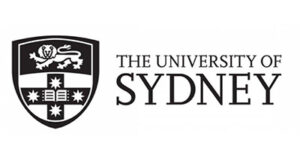
The AHSN2023 Conference Convenor and Committee are pleased to announce the dates and theme for this exciting event, to be held at The University of Sydney, Camperdown Campus. Please put it in your diary and begin planning to come and join in, whether online or in person. Details of the Call and conference outline will be announced in the next issue of the Digest
Theme: A Human Right to Humour?
Dates: 6-7 Feb 2023 (tentative Session 1, online), 9-10 Feb 2023 (Session 2, in-person)
Location: The University of Sydney
For all enquiries, please do not hesitate to contact us at: conferenceahsn@gmail.com
Conference Committee
Ben Nickl, The University of Sydney, Convenor
Rodney Taveira, The University of Sydney
Mark Rolfe, UNSW
Reza Arab, Griffith University
Meet the Conference Committee
 Dr Benjamin Nickl is Lecturer and current chair of the Department of Comparative Literature, Culture, and Translation Studies, in the Faculty of Arts and Social Sciences at The University of Sydney. His recent work includes publications on humour as a mass-cultural technology and as a sonic translation device. He is interested in the posthuman potential of comedy and humour culture and has works forthcoming on cancel culture and the entertainment economy. He is a member of the AHSN Review Panel.
Dr Benjamin Nickl is Lecturer and current chair of the Department of Comparative Literature, Culture, and Translation Studies, in the Faculty of Arts and Social Sciences at The University of Sydney. His recent work includes publications on humour as a mass-cultural technology and as a sonic translation device. He is interested in the posthuman potential of comedy and humour culture and has works forthcoming on cancel culture and the entertainment economy. He is a member of the AHSN Review Panel.
 Dr Rodney Taveira is a Lecturer in American Studies at the United States Studies Centre at The University of Sydney. Rodney has published on contemporary American fiction, book reviews, and television, and the interrelation of cinema, photography, painting, and literature. Each year, he teaches “Stand-Up USA: American Comedy and Humour”, an undergraduate unit that interrogates American humour from the trickster to the troll.
Dr Rodney Taveira is a Lecturer in American Studies at the United States Studies Centre at The University of Sydney. Rodney has published on contemporary American fiction, book reviews, and television, and the interrelation of cinema, photography, painting, and literature. Each year, he teaches “Stand-Up USA: American Comedy and Humour”, an undergraduate unit that interrogates American humour from the trickster to the troll.
 Dr Mark Rolfe is an Honorary Lecturer with the School of Social Sciences at The University of New South Wales in Sydney, where he taught for a long time. He is keenly interested in Australian politics, rhetoric, propaganda, political satire, American politics, populism, and political leadership and has published books and journal articles on these topics with several forthcoming. He is a member of the AHSN Board and Review Panel.
Dr Mark Rolfe is an Honorary Lecturer with the School of Social Sciences at The University of New South Wales in Sydney, where he taught for a long time. He is keenly interested in Australian politics, rhetoric, propaganda, political satire, American politics, populism, and political leadership and has published books and journal articles on these topics with several forthcoming. He is a member of the AHSN Board and Review Panel.
 Dr Reza Arab is a Resident Adjunct Fellow at The Griffith Centre for Social and Cultural Research at Griffith University in Brisbane. He is a linguist with special interests in semantics, pragmatics, and communication. He was also a member of the organising committee for AHSN conferences in 2022 (UTAS) and 2020 (Griffith) and is Book Review Editor for the AHSN Digest (2022- ).
Dr Reza Arab is a Resident Adjunct Fellow at The Griffith Centre for Social and Cultural Research at Griffith University in Brisbane. He is a linguist with special interests in semantics, pragmatics, and communication. He was also a member of the organising committee for AHSN conferences in 2022 (UTAS) and 2020 (Griffith) and is Book Review Editor for the AHSN Digest (2022- ).
Members’ New Publications
Ying Cao, Chong Han, Xiangdong Liu, Adrian Hale. 2021. ‘She is like a Yakshini’: character construction via aggressive humour in Chinese sitcom discourse. European Journal of Humour Research, 9 (4): 110-130. https://doi.org/10.7592/EJHR.2021.9.4.585
Jocelyn Valerie Chey. 2021. Overcoming awkwardness: some interpretations of Australian humour. European Journal of Humour Research, 9 (4): 131-151. https://doi.org/10.7592/EJHR2021.9.4.560
Ross Fitzgerald and Ian McFadyen. 2022. Writing Political Satire in Australia. Quadrant, 25 February 2022. At: https://quadrant.org.au/magazine/2022/03/writing-political-satire-in-australia/
Adrian Hale. 2021. Dame Edna and ‘the help’: Australian bilingual Latin American migrants respond to ‘that’ joke. European Journal of Humour Research, 9 (4): 152-172. https://doi.org/10.7592/EJHR2021.9.4.568
Ann Lee. 2022. Review of Cherian George and Sonny Liew. 2021. RED LINES: 60 Global Cartoonists Talk Fear and Favour. Cambridge MA: MIT Press. Arts Equator: Thinking and Talking About Arts and Culture in Southeast Asia, 24 March 2022. At: Bottom of Form https://artsequator.com/red-lines-review/ (accessed 3 April 2022).
Members’ New BOOK
Justine Sless. 2022. Mistress of Mirth’s Comedy Tour. Kew VIC: Aspasia (Australian Scholarly Publishing). ISBN: 9781922669377 ISBN10: 1922669377
https://scholarly.info/book/comedy-tour/
Publisher’s description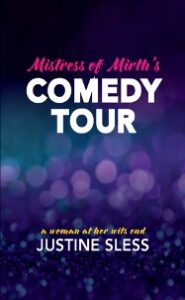
‘I know you wouldn’t know it to look at me, but I once sneezed a bit of carrot onto a woman’s hand …’
A good joke takes you somewhere completely unexpected and makes you laugh, an excellent joke makes you laugh and think.
Welcome to The COMEDY Tour woven through with comedic facts, comments and short stories; this is a joke like no other and a mirthful mutiny on the historically – or is it hysterically? – male-dominated world of stand-up comedy.
Author information
 Justine Sless (BA, MA) is a Melbourne-based comedian, writer, humour academic and community worker. She performs, teaches, produces and writes stand-up comedy, has toured nationally and internationally, and was the former creative director of Melbourne Jewish Comedy Festival. Justine has had short stories published in anthologies and academic journals, has written numerous one-woman shows and tailored comedy for a huge range of clients. The COMEDY Tour is Justine’s first book which began life as a Master’s by Research in creative writing from La Trobe University.
Justine Sless (BA, MA) is a Melbourne-based comedian, writer, humour academic and community worker. She performs, teaches, produces and writes stand-up comedy, has toured nationally and internationally, and was the former creative director of Melbourne Jewish Comedy Festival. Justine has had short stories published in anthologies and academic journals, has written numerous one-woman shows and tailored comedy for a huge range of clients. The COMEDY Tour is Justine’s first book which began life as a Master’s by Research in creative writing from La Trobe University.
Research Student Profile
Emily Greenbank, Linguistics and Applied Language Studies at Te Herenga Waka – Victoria University of Wellington

Kia ora, I’m Emily, a Postdoctoral researcher in the School of Linguistics and Applied Language Studies at Te Herenga Waka – Victoria University of Wellington in Aotearoa New Zealand. I currently hold a Rutherford Postdoctoral Fellowship funded by Royal Society of New Zealand Te Apārangi. I’m undertaking research into how skilled migrants and former refugees navigate employability, or employable identities, in the New Zealand labour market. My PhD research, taking an Interactional Sociolinguistic approach, also focused on former refugees, largely drawing on interview data. In my current project I broaden the scope– now including skilled migrants as newcomers – and exploring how employable identities are negotiated moment to moment in interaction, using authentic workplace discourse. My methodology follows the Language in the Workplace project, which has been studying spoken communication in NZ workplaces for 25 years exploring a wide range of elements of workplace talk, including the use of humour.
Humour isn’t the main focus of my research, but it is hard to ignore! As I discussed in the paper I recently gave at the 28th AHSN conference in February 2022, I am interested in exploring the ways that laughter and humour can be used to manage identity work in interaction, and in particular the important role it can play for newcomers in (attempting) to negotiate belonging.
In my workplace data, I outlined how a participant attempted to use humour and their in-group knowledge to make a fleeting claim to belonging when talking to a resident of the eldercare facility where she worked. Demonstrating that humour is of course a co-construction, her interlocutor unfortunately ignored this attempt and instead firmly repositioned her as a newcomer, ignoring or overlooking her attempt at humour and instead ‘teaching’ her about the topic of which she had just displayed knowledge. This perhaps unintentional gatekeeping of in-group membership demonstrates the power of humour as a joint enterprise and, for newcomers, its role in maintaining marginalisation if the attempt at humour is not endorsed.
Negotiating belonging may necessitate the reconciliation of disparate past and present identities, and I argue that laughter serves such an interactional function in this process. Another of my study’s participants told a rather grim story involving elements of abandonment and imprisonment, making use of strategically placed laughter to distance her present, narrator-self from the elements of extreme low agency and suffering that her protagonist-self experienced in the story she was telling. In doing so, she agentively counteracted potential threat to her present-day identity work in the interview context – that of a fiercely independent, highly-educated, self-reliant woman.
In both of these examples which featured in my presentation, the women’s use of humour speaks to the Discourses surrounding refugeehood with which former refugees must contend – widely-circulating ideas about what it means to ‘be’ a refugee, characterised by such elements as vulnerability, victimhood, and trauma. Whether such Discourses result in having attempts to display in-group status overlooked, or threaten present-day negotiation of employable identities, it becomes clear that these ideas associated with refugeehood can be a hinderance to newcomers’ full participation in the workplace and in society. The interactionally strategic use of humour and laughter is a valuable lens for exploring the ongoing navigation of belonging and getting on with living normal lives post-migration.
My research aims to describe and unpack the ideological and structural (alongside the pragmatic/interactional) obstacles that migrants face in the workplace, to open up space for these obstacles to be addressed. I would like to thank the Rutherford Foundation for the opportunity to undertake this research, and the Australasian Humour Studies Network for the opportunity to present my explorative analysis (and for the useful feedback I received!).
Feel free to contact me about my research at emily.greenbank@vuw.ac.nz
Research Student Profile
Suchi Chowdhury, Media and Communication, RMIT University, Melbourne
Hello, I am Suchi, but ‘sushi’ is fine too; helps with easy recall as you can guess 😊. I am a second-year PhD student attempting to break some ground on scholarship of stand-up comedy in India. This genre of entertainment has grown strong roots in the country’s urban soil over the past fifteen years, cultivated by global flows of capital, commerce, and culture. However, more recently, comedians have been receiving threats and other forms of intimidation from supporters of the current conservative Hindu-nationalist government.
A background disclaimer is in order now. I was born and raised in India. I worked there in copywriting, journalism, and public relations for a few years. Then an arranged knot of (holy) matrimony brought me to Melbourne; I have been living here for sixteen years now. Though my identity is a slightly granular mix of Australian and Indian (socio-technically speaking), my research will be an Australian student’s view of India’s contemporary cultural milieu: a blend of my recollection of India of the ’80s, ’90s, and early 2000s, and my experience of living, working, and learning in Australia. India has changed considerably over the past fifteen years. Every time I go there to visit family, I find myself at the periphery, struggling to match my observations and perceptions with my memory of the land and its people of the earlier decades.
Stand-up comedy in India is a new form of entertainment and enterprise. Its birth can be traced back to the media boom in India following liberalisation of its economy from 1991. Structural adjustments were made to allow for freer flow of global capital and enterprise. Stand-up comedy in its ‘Western’ format was introduced via television competition shows. Live stand-up comedy was then popularised in the bigger metropolitan cities, and is now gradually spreading to the ‘satellite’ cities as well. Like its geographical reach, the topics covered in comedy shows too have grown. Comedians – while still performing situational and observational comedy of everyday life – have moved towards political satire performing jokes, and sometimes full routines, on the current state of Indian politics and political leadership. The Indian state is displeased. India – the melting pot of languages, beliefs, cultures, and customs – has been an exemplary democracy globally, with its diverse peoples living in relative peace. Under the current political leadership, the country’s tenets of secularism and inclusivity are under threat. Dissent in any form is being defined as sedition in this increasingly authoritarian political environment. Accordingly, comedians joking about India’s current political trends have been facing various forms of state-perpetrated persecution including threats of rape, death, and incarceration.
My project will aim to explore the efficacy of stand-up comedy in the face of the authoritarian trajectory that India is currently negotiating. Using the theoretical framework of Russian philosopher Mikhail Bakhtin’s work on carnival, and through ethnographic fieldwork, interviews, and textual analyses, my study will investigate the potential of laughter as activism – or laughtivism – in the Indian context.
As I rue the gradual disappearance of my India through a study of stand-up comedy, I am certain that this project is unlikely to leave you in stitches. However, I thank the AHSN for bringing me into their fold. I look forward to sharing my research and getting to meet you and other humour studies scholars in future.
Please feel free to contact me at: s3871048@student.rmit.edu.au
AHSN Review Panel member Meredith Marra, Victoria University of Wellington, in the Media
Why humour and power have more to do with each other than you think
By Anna Kelsey-Sugg for Counterpoint
31 March 2022
When you think about how we negotiate power at work, humour is probably not the tool that first comes to mind.
After all, what does a giggle around the kitchenette or a witty quip in the lift have to do with power?
Heaps, argues Meredith Marra, linguistics professor at Victoria University of Wellington, who has researched humour for more than two decades.
Across all sorts of workplaces, humour is ubiquitous, she says, even though it often operates “below the level of consciousness”.
“Humour is very serious,” Professor Marra says.
While it’s often overlooked in the workplace, humour is used for everything from decision-making to creating hierarchies and subverting power, Professor Marra says.
And she wants everyone to better understand how we use humour — deliberately or inadvertently — to include or exclude the people around us.
A means of keeping people ‘at the boundary’
Humour is a “social glue”, Professor Marra says.
Maybe you’re a lower rung employee meeting a senior manager and, upon introduction, you make a joke, intended to show you’re not intimidated and that you belong. It’s an example of using humour to challenge or subvert power.
Or perhaps you’re in a meeting and a colleague repeats a point you’ve already made, claiming it as their own. Rather than call out the behaviour directly, you might laughingly remind the group you’d just said the same thing – although you’re deadly serious.
Humour can be “both power and politeness”, Professor Marra says. And there can be serious consequences of getting it wrong.
Take a meeting situation, which often starts with a series of jokes and small talk.
If you don’t understand that part of the process and sit silently, you risk “being seen as different, not fitting in [or] pulling your weight, and definitely not a good part of the team. And it’s the penalty of you just not understanding the routine”, she says.
Belonging at work is a fragile thing, which cultural differences can compound, she says. Not being familiar with communication norms, like how humour is used, can make a newcomer at work feel as though they’re not part of the “in-group”.
But humour can also be used deliberately as a means “of oppressing people and keeping people down”, she says.
For a recent study for the Victoria University of Wellington’s Language in the Workplace project, Professor Marra and her team collated the experiences of skilled migrant interns in New Zealand workplaces.
In one instance, an existing employee jokingly told a new intern that new staff were required to make lunch for the whole team.
The new staff member didn’t get the joke – they were still navigating the work environment and the culture – and they felt awkward and unsure about how to respond.
“I’m sure that the person, by teasing [the new colleague] thought they’d done a good job of including them, not realising that if you don’t share their understanding of what happens on your first day at work, it was really confronting and very stressful,” Professor Marra says.
“If you’re not part of the group, it can be really, really daunting to have to deal with the humour.”
And when workplace humour includes references to cultural background, a “failed understanding” can quickly progress into a “microaggression”, even if “it might be meant benevolently to include somebody”.
The humour can carry a message about “not being one of us”, Professor Marra says.
“Every time culture is raised, even if it’s for fun, there is a potential for saying ‘you’re different’ … it might be a way of just keeping you at the boundary.”
When laughter ‘rears its ugly head’
Like humour, laughter can also have opposing functions, James Nikopoulos, assistant professor at Nazarbayev University in Kazakhstan, says.
“Laughter evolved in human beings before we actually learnt to speak and evolved to communicate a sense of positive emotion like joyfulness or happiness or mirth,” he tells ABC RN’s Counterpoint.
“But the problem is [when it] rears its ugly head in situations that other people don’t find happy. When it seems to be improper, it really pisses people off, even if it’s not meant to.”
For instance, laughing at a funeral or at a child’s school concert.
Laughter can also get people off-side when it’s responding to a “situation [that] is too fresh on people’s minds”.
“In order for something to be funny, it has to offend expectations,” he says.
“This is called the incongruity theory in humour. It has to break rules. But it has to do so in a way that doesn’t offend people or make them feel like someone’s being hurt.”
How to avoid using humour to exclude
At work, the way to avoid causing damage with humour comes down to “raising awareness of the unconscious bias we have in everything that we do”, Professor Marra says.
“If you’re in a majority group, you don’t often recognise that there’s bias against other people in the group.
“There needs to be a commitment from everybody to recognising [that].”
She says we should actively avoid “expecting everybody to have the same norms as you”. That includes remembering that we don’t all share an identical sense of humour.
Professor Marra believes we could all benefit from recognising the powerful role of humour in human interactions and from considering “how it can help and hinder”.
“We’re all outsiders sometimes … and humour seems to be one of the ways that we manage and navigate our relationships … It’s not just something we should push to the side.”
ABC Podcast featuring three AHSN members,
Robert Phiddian, Jessica Milner Davis and Angelina Hurley
“The future of satire is no laughing matter”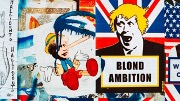
Future Tense – ABC Radio National
Producer and Presenter, Edwina Stott
Satire is society’s release valve and it allows us to reflect on just about anything.
It’s been around for thousands of years, but social media, shameless leaders and an appetite for outrage are all having an impact on this ancient form of social commentary.
So is satire’s power dwindling? Or is it evolving for the future?
Guests:
Professor Robert Phiddian, Professor of English from Flinders University
Adam James Smith, co-director of the York Research Unit for the Study of Satire & co-host of Smith & Waugh Talk About Satire
Dr Jessica Milner Davis, honorary research associate at the University of Sydney
Angelina Hurley, PhD candidate at Griffith University
Craig Quartermaine, journalist & comedian
Duration: 29min 6sec
Broadcast: Sunday 3 April 2022, 12:30pm
Listen and download the podcast at: https://www.abc.net.au/radionational/programs/futuretense/why-the-future-of-satire-is-no-laughing-matter/13798734
A State Library of NSW (SLNSW) Scholar Talk was given by
Robert PhidDian, 5 April 2022
“Smith’s Weekly and the larrikin tradition in Australian cartoons”
https://www.sl.nsw.gov.au/events/smiths-weekly-and-larrikin-tradition-australian-cartoons
Abstract
Australians congratulate ourselves on the glories of a thing we call larrikin humour. If it exists, one major source is the raucous Sydney journal, Smith’s Weekly (1919–50). Born in a pandemic a century ago, Smith’s Weekly (1919–50) had a stable of brilliant, larrikin cartoonists. I will explore cartoons from Smith’s, to give an account of its preoccupations, and its role in the Australian cartooning tradition. It will also test the validity of the claim to a distinctive ‘larrikin’ humour and contrast it with a more cosmopolitan thread in many of the cartoons.
Professor Robert Phiddian, Ross Steele AM Fellow at the SLNSW, is Professor of English at Flinders University. He studies and writes about political satire, particularly the satire in Australian political cartoons, and in eighteenth century writers like Jonathan Swift. Since its inception in 2012, he has been a member of the AHSN Review Panel and at the AHSN 28th Conference in Hobart, Tasmania, he was inducted as a Fellow of the AHSN Order of the Jess-ters.
Transition in AHSN Book Review Editorship
Farewell Message from our Pioneering Founder, Amanda Cooper, Western Sydney University
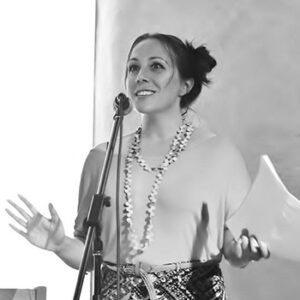 Early in 2021, I was appointed by the AHSN Board to join the co-editors of The Humour Studies Digest as Book Review Editor, handling both the announcement and review of books in the wide-ranging field of Humour Studies. The Digest had featured the occasional book review in the past but we hoped to make this feature more regular. My role was to establish a process and criteria for commissioning book reviews. I aimed for a mix of texts that would have broad appeal to our readers and texts that explored innovative facets of humour or comedy studies. Standardising reviews from such a wide selection of disciplines required an in-house style guide to be prepared and disseminated to all reviewers. I also worked on standardising the format of our book notices.
Early in 2021, I was appointed by the AHSN Board to join the co-editors of The Humour Studies Digest as Book Review Editor, handling both the announcement and review of books in the wide-ranging field of Humour Studies. The Digest had featured the occasional book review in the past but we hoped to make this feature more regular. My role was to establish a process and criteria for commissioning book reviews. I aimed for a mix of texts that would have broad appeal to our readers and texts that explored innovative facets of humour or comedy studies. Standardising reviews from such a wide selection of disciplines required an in-house style guide to be prepared and disseminated to all reviewers. I also worked on standardising the format of our book notices.
My first port of call when commissioning reviews was always our esteemed AHSN Review Panel. But matching books with reviewers is not always a straightforward process. When availabilities or specialties did not match up, I sought appropriate and exciting voices from both inside and outside the AHSN community. I hoped that this approach would be an opportunity to bring some awareness to the great work of the AHSN. I was also keen to feature some emerging voices of the AHSN by commissioning reviews from Early Career Researchers. This is a trend I hope to see continue, perhaps in consultation with the newly established AHSN ECR network.
Obviously, the past few years have been challenging to say the least. The pandemic has made obtaining hard copies of books difficult as some printing presses temporarily shut down and the delivery of mail around the globe lagged. E-copies of books for review were easier to obtain, and indeed, many publishers are moving towards e-copies as a more environmentally sustainable alternative anyway. The university sector was also experiencing its own stresses and difficulties. It was not a good time to be asking already overloaded academics to take on extra, unpaid work. When scholars were generous enough to agree to contribute to The Digest by reviewing, I asked them to set their own deadlines based on their commitments and capacities. I offered flexible deadlines and extra time if needed. This was my small contribution to fostering a kinder and more sustainable work culture than the one we currently labour under. This is a global issue that the covid-19 pandemic has recently brought into sharp relief.
Taking my cue largely from AHSN events I had attended, I wanted the tone of our book reviews to be warm, relaxed and collegial. Reviewers were encouraged to include the context and content of the book, along with an analysis and evaluation that would specifically appeal to those interested in the study of comedy, humour and laughter. But personal touches were also welcome, as was, of course, any touch of humour. In her review of Bridging the Humour Barrier: Humour Competency Training in English Language Teaching (2021), Kerry Mullan wrote of instances in which humour failed to translate as des grands moments de solitude (which is how I loftily referred to lockdown thereafter). In his review of Comics Studies Here and Now (2018), Richard Scully likened this soon to be classic text to The Beatles’ “White Album”. In his review of How to Tell a Joke: An Ancient Guide to the Art of Humor (2021), Michael Ewans made sure to dig out and quote in full one of Cicero’s best gags. These are the sorts of moments that make an editor’s job a joy.
To date, five reviews have been published over three editions and seven more are in the works. Some of these texts will be reviewed by well-established members of the AHSN Board and Review Panel, while some will consider work produced by members of the AHSN, including chapters featured in mammoth editions of The Palgrave Handbook of Humour Research (2021) and The Palgrave Handbook of Humour, History, and Methodology (2020). We have published reviews on texts that investigate the humour of ancient Roman orators, the contemporary state of comics studies, the social psychology of humour, the use of humour in language classrooms, and the comic turn in contemporary English fiction. And here, I must give credit to Matilda Knowles for being our first ECR reviewer and for agreeing to take on a text that was a little outside her research area. These reviews are all now available in pdf on the AHSN website, free to access as part of The Digest (under the tab ‘Newsletter’) or individually (under ‘Resources’).
I hand this role over now in order to concentrate on my own research, but I look forward to reading future reviews emanating from the AHSN community and watching the continuing evolution of The Humour Studies Digest. Reza Arab will be taking over the role of BRE and I wish him the very best. I want to thank all the reviewers I had the pleasure to work with. I want to thank Michael Meany for a wonderful opportunity which taught me a great deal. But most of all, I must thank Jessica Milner Davis and Kerry Mullan for consistently sharing their wisdom and offering such generous support.
Amanda Cooper
E: A.Cooper5@westernsydney.edu.au
New Book Review Editor Appointed
Dr Reza Arab

Reza is a linguist with special interests in semantics, pragmatics, and communication. He is a resident adjunct fellow at the Griffith Centre for Social and Cultural Research at Griffith University in Brisbane.
He is the guest editor (with Jessica Milner Davis) of a Special Issue on Humour and Belonging for EJHR (upcoming issue 10:2) and his current research project is on the perception of correctional centres through humorous reviews.
He joined the AHSN by presenting a paper at the 24th conference in Cairns when he was a PhD student at Griffith University. He continued as an active member of the Network afterwards and was a member of the organising committee for the 26th conference at Griffith University in 2020, and again for the 28th conference at the UTAS in 2022.
He looks forward to being in touch with fellow AHSN members about their new publications. Please let him know as soon as you have a new humour-related academic publication (books, book chapters, and papers). They will be shared with other members in our regular AHSN Humour Studies Digests. Full book reviews are selectively commissioned for review and these are also posted on the new, dedicated page on the AHSN website at: https://ahsnhumourstudies.org/book-reviews/
Contact Reza at: r.arab@griffith.edu.au
CALLS FOR PAPERS
Reminder: ISHS 2023 Call for Papers and Student Awards Now Open
The International Society for Humor Studies is to meet again at last! Please update your calendars.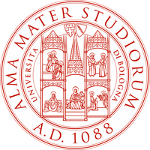
ISHS 2023 will be held (after two years of cancellation due to Covid-19) in Bertinoro, Emilia-Romagna, Italy.
Dates: 29 June – 2 July 2022
Conference website:
https://eventi.unibo.it/ishs-2022?submit=Click+here+to+visit+the+2022+Conference+Website
Important dates:
Pre-Conference programme 26-28 June 2022
32nd ISHS Conference 29 June – 2 July 2022
Abstract submission page open until 1 May 2022
Call for Papers ISHS 2022 – Calamity Edition
Kindly submit (or resubmit) all abstracts to be considered for the 2022 Conference
Abstracts will be accepted for consideration from 4 April to 1 May, 2022. Submissions now open
Conference registration will be required to finalize abstract acceptance.
Abstracts: We welcome proposals in all areas of humour scholarship.
Abstracts dealing with any aspect of the conference theme are invited. Abstracts should be 250 words long and are expected to follow academic conventions. Please provide three key words to facilitate scheduling of the sessions.
Presentations will last 20 minutes followed by 10 minutes for questions from the floor.
Panel proposals: Panel proposals should include the names of all panellists, a short abstract introducing the theme of the panel and showing how the different papers are linked to the overall theme. An abstract for each individual presentation is required.
Each panel session will run for 90 minutes including all speakers and questions from the floor. The panel convenor may decide allocation of time and speakers within the 90 minutes.
Proposed panels with open calls:
Panel on Humor and the public sphere
Convenor: Giselinde Kuipers (giselinde.kuipers@kuleuven.be)
This panel invites presentations on humor in the public sphere
Panel on Humor and Artificial Intelligence
Convenor: Kiki Hempelmann (C.Hempelmann@tamuc.edu)
This panel invites presentations for the 3rd Panel on Humor and Artificial Intelligence
Convenor: Lydia Amir (lydamir@mail.com)
This panel invites presentations on the Philosophy of Humor
Committees

ORGANIZING COMMITTEE
Convenor
Delia Chiaro, University of Bologna (Dept. of Interpreting and Translation)
Conference board
Debra Aarons, University of New South Wales, Australia
Matteo Andreone, Independent scholar
Wladek Chlopicki, University of Krakow
Jessica Milner Davis, University of Sydney, Australia
Giuseppe De Bonis, Università Ca’ Foscari, Venice
F. “Kiki” Hempelmann, Texas A&M University-Commerce
Giselinde Kuipers, University of Leuven
Liisi Laineste, Estonian Literary Museum, Tallinn
Sharon Lockyer, Brunel University London
Linda Rossato, Università Ca’ Foscari, Venice
Leonor Ruiz, University of Alicante
Paul Simpson, University of Liverpool
Simon Weaver, Brunel University London
Local organizing committee:
Monica Michelacci (Event Planner)
Jennifer Monroe (Web/Planning Manager)
Nikita Lobanov (Graduate Assistant)
SPECIAL CALL FOR STUDENT PRESENTERS:
Since 1999, the ISHS has awarded regularly Graduate Student and Emerging Scholar Awards, with two named for ISHS pioneers, Don and Alleen Nilsen and Christie Davies (the DANYS and the CDA respectively).
Rules can be downloaded from: http://humorstudies.org/ConferCenter.htm?#Awards
AHSN has seen three of its (then) student members recognised and honoured this way (they’re all doctors now):
Maren Rawlings, Swinburne University of technology, at the Conference held in Alcalá de Henares, Spain, 2008
Rebecca Higgie, Curtin University, at the Conference held in Krakow, Poland in 2012, and
Ying Cao, University of Western Sydney, at the Conference held in Montreal, Canada, in 2017 (DANYS Recipient)
How about joining them? Go ahead and make a proposal for ISHS2022!
Appel à communications / Call for Papers
Colloque international RIRH – Paris 2022
Les publics de l’humour / Humour and its Publics
Sorbonne Nouvelle / Campus Condorcet – Aubervilliers
24 and 25 Novembre 2022
The conference is organised by RIRH (Réseau interdisciplinaire de recherches sur l’humour / Interdisciplinary network on humour research): https://rirh.hypotheses.org/
Although the call for papers is in French, abstracts can be submitted in either French or English.
This international conference, organised by RIRH (Réseau Interdisciplinaire de Recherche sur l’Humour/ Interdisciplinary Network on Humour Research), aims to provide an overview of work dealing with the question of audiences and the reception of humour. It aims to showcase a variety of perspectives and approaches (literature, history, sociology, translation, theatre studies, information and communication science, political science), and to attempt to answer the following questions through various epistemological reflections, field work and diverse methodologies. Who are humour audiences? How can they be defined? How are they to be understood? How do they materialise?
Papers should be formed around one or more of the main conferences themes (axes) as follows:
Axe 1: Peut-on faire une histoire des publics de l’humour? Is it possible to write a history of humour’s publics?
Axe 2: Comment saisir les publics contemporains de l’humour? Defining publics for contemporary humour
Axe 3: Représenter et se représenter les publics de l’humour? Humour’s publics –representing them(selves)?
Axe 4: Les forces politiques de l’humour (du côté des publics) The political force of humour (on the public side)
Axe 5: Former un public de l’humour? Making a public for humour
Proposals should be a maximum 3000 characters (including spaces) and should be sent by 30 June 2022 to: association.rirh@gmail.com
For more information about RIRH and the Conference, visit our website at:
CALL FOR CONTRIBUTIONS – OR AN INVITATION TO CELEBRATE!
EUROPEAN JOURNAL OF HUMOUR RESEARCH
Deadline extension
Time flies: EJHR is celebrating its 10th anniversary in 2022 and we would like to invite you to celebrate with us! During the past decade, our journal has become an important venue for humor research and has brought together scholars from all around the world and from a significant number of research areas.
So, we invite you to send us your EJHR-related contributions (of up to 500 words – unless they are pictures, which are worth 1000 words anyway) by 30 June 2022. The contributions could take the form of memories, thoughts, wishes, stories, jokes, memes, photos, etc., and are expected to be related to your experiences with EJHR as authors, guest-editors, reviewers, editorial assistants, and readers. Your texts will be included in the digital scrapbook which will be published as part of the final issue of 2022.
A special email address has been created for this purpose: ejhr.scrapbook@gmail.com. You are welcome to use it to send us your contributions, questions, remarks, ideas.
Thank you very much in advance,
The EJHR Editorial Team
Visit the EJHR at: https://www.europeanjournalofhumour.org/index.php/ejhr
NEW BOOKS
NEW BOOK ON HUMOUR & THE COMIC
Jeanne Mathieu-Lessard. 2022. Framing Literary Humour: Cells, Masks and Bodies as 20th-Century Sites of Imprisonment.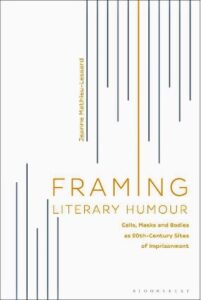 London: Bloomsbury Academic. 208 pp. ISBN (Hardcover): 9781501356551. ISBN (Paperback): 9781501371998. ISBN (eBook): 9781501356575.
London: Bloomsbury Academic. 208 pp. ISBN (Hardcover): 9781501356551. ISBN (Paperback): 9781501371998. ISBN (eBook): 9781501356575.
Publisher’s Description:
Contrary to what their oppressive design would lead us to believe, might structures of imprisonment actually incite humour? Starting from the most obvious areas of imprisonment (war camps, prison cells) and moving to the less obvious (masks, bodies), Framing Literary Humour demonstrates how 20th-century humour in theory and in fiction cannot be fully understood without a careful look at its connection with the notion of imprisonment. Understanding imprisonment as a concrete spatial setting or a metaphorical image, Jeanne Mathieu-Lessard analyses selected works of Romain Gary, Giovannino Guareschi, Wyndham Lewis, Vladimir Nabokov and Luigi Pirandello to reconfigure confinement as an essential structural condition for the emergence of humour.
Contents:
Introduction
1. Humour and Imprisonment
2. Humour in the Cell: Prison Cells and War Camps
3. Social Entrapment: Humoristic Characters vs. the World
4. Humour in the Cells: Configurations of the Body as Prison
Conclusion: A Geometry of Humour
Author’s Bionotes:
Jeanne Mathieu-Lessard teaches French and Francophone literatures at the University of Montréal and the University of Ottawa, Canada. She received her PhD in comparative literature from the University of Toronto, Canada. Her work in comparative literature and humour studies has been supported by multiple scholarships and has received the Canadian Comparative Literature Association Esther Cheung Award (2017) and an Outstanding Presentation Award at the International Summer School and Symposium on Humour and Laughter (2016).
Inés Lozano-Palacio and Francisco José Ruiz de Mendoza Ibáñez. 2022. Modeling Irony: A cognitive-pragmatic account. Figurative Thought and Language, 12. Amsterdam and NY: John Benjamins. ix, 173 pp. ISBN 9789027210814; e-Book: ISBN 9789027258144
Publisher’s description
This book adopts a broad cognitive-pragmatic perspective on irony which sees ironic meaning as the result of complex inferential activity arising from conflicting conceptual scenarios. This view of irony is the basis for an analytically productive integrative account capable of bridging gaps among disciplines and of recontextualizing and solving some controversies. Among the topics covered in its pages, readers will find an overview of previous linguistic and non-linguistic approaches. They will also find definitional and taxonomic criteria, an exhaustive exploration of the elements of the ironic act, and a study of their complex forms of interaction. The book also explores the relationship between irony, banter and sarcasm, and it studies how irony interacts with other figurative uses of language. Finally, the book spells out the conditions for “felicitous” irony and re-interprets traditional ironic types (e.g., Socratic, rhetoric, satiric, etc.), in the light of the unified approach it proposes.
inferential activity arising from conflicting conceptual scenarios. This view of irony is the basis for an analytically productive integrative account capable of bridging gaps among disciplines and of recontextualizing and solving some controversies. Among the topics covered in its pages, readers will find an overview of previous linguistic and non-linguistic approaches. They will also find definitional and taxonomic criteria, an exhaustive exploration of the elements of the ironic act, and a study of their complex forms of interaction. The book also explores the relationship between irony, banter and sarcasm, and it studies how irony interacts with other figurative uses of language. Finally, the book spells out the conditions for “felicitous” irony and re-interprets traditional ironic types (e.g., Socratic, rhetoric, satiric, etc.), in the light of the unified approach it proposes.
Contents
Chapter 1. In search of a unified framework ix
Chapter 2. Theoretical pre-requisites 1–20
Chapter 3. The epistemic and the observable scenarios 21–66
Chapter 4. Structural elements in irony 67–96
Chapter 5. Ironic uses 97–116
Chapter 6. Conclusions 117–144
References 145–154
Index 155–169 and References 170–173
Pål Ketil Botvar, Ann Kristin Gresaker, Olav Hovdelien, eds. 2019. Ingen spøk: En studie av religion og humor (No Joke: A Study of Religion and Humour). Nordic Open Access Scholarly Publishing (NOASP) of Cappelen Damm Akademisk. PDF 9788202590437; EPUB 9788202632519; HTML 9788202646158; XML 9788202646165; Print on demand 9788202646172
https://press.nordicopenaccess.no/index.php/noasp/catalog/book/69
Chapter authors:
Pål Ketil Botvar, Benjamin Eriksen, Ann Kristin Gresaker, Gunnar Haaland, Andreas Häger, Olav Hovdelien, Bjarte Leer-Helgesen, Pål Repstad, Shoaib Sultan, Kai Hanno Schwind, Sofia Sjö, Didrik Søderlind, Irene Trysnes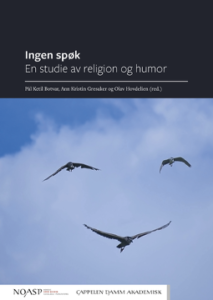
Publisher’s description
Hva mener nordmenn om religionshumor? Hvilke vurderinger gjør komikere i forbindelse med humor om religion? På hvilken måte fremstilles religionshumor i dagens mediehverdag? Hvordan forholder ulike religiøse miljøer seg til humor om deres egen trosretning? Det er liten tvil om at koblingen mellom religion og humor noen ganger kan være betent. Religion er ikke alltid til å spøke med. Samtidig finnes det mange eksempler på at religion og humor ikke trenger å stå i et motsetningsforhold, men at det foregår forhandlinger om hvordan humor og religion kan tilpasse seg til hverandre. Det er også mye humor i religiøse miljøer. Denne boken tar for seg møtet mellom humor og religion i ulike sammenhenger.
Boken inneholder et knippe bidrag skrevet av personer fra ulike fagfelt med kompetanse på religion, medier og humor. Praktikere på humorfeltet er representert gjennom intervjuer med standupkomikere. Boken retter seg mot alle som er opptatt av religionens rolle i humorsammenhenger, mot praktikere på mediefeltet og religionsfeltet, politikere og andre beslutningstakere, og mot studenter i samfunnsfag, religionsfag og medievitenskap.
Publisher’s description
How do Norwegians feel about religious humour? What do comedians take into consideration when producing and performing jokes about religion? How is humour about religion presented in television comedies, film comedies and men’s magazines? How do different religious groups relate to humour about their own faith? The relationship between religion and humour can be contentious – religion is not always something to make light of – and yet, religion and humour are in dialogue, negotiating ways to accommodate each other. There is also much humour to be found in religious milieus. This anthology addresses encounters between humour and religion in a variety of contexts.
The book consists of contributions written by people from different disciplines with expertise in religion, media and humour. Practitioners are represented through interviews with stand-up comedians. The book is aimed at everyone interested in the role of religion in humoristic settings, as well as professionals in the fields of media and religion, politicians and other decision-makers, and students in social sciences, religious studies and media studies.
Chapters (PDF TO DOWNLOAD – free access and abstracts in English):
Forord: Pål Ketil Botvar, Ann Kristin Gresaker, Olav Hovdelien
Kapittel 1: Humor og religion — et umake par? Pål Ketil Botvar, Ann Kristin Gresaker, Olav Hovdelien
Kapittel 4: Prestehumor i norske medier i 50 år. Pål Repstad
Kapittel 6: Humor som bro eller hinder: Islam i två norska filmkomedier. Sofia Sjö
Kapittel 12: Humor hos to norske dominikanerpatre. Olav Hovdelien
Kapittel 13: Äntligen tacofredag: Om komedi i kyrklig extern kommunikation. Andreas Häger
NEW BOOK ON HUMOUR & THE COMIC
Peter Swallow, Edith Hall (eds). 2022. Aristophanic Humour: Theory and Practice. London: Bloomsbury Academic. 296 pp. w/ 20 b&w illustrations. ISBN (Hardcover): 9781350101524. ISBN (Paperback): 9781350194854. ISBN (eBook): 9781350101531.
Publisher’s Description:
This volume sets out to discuss a crucial question for ancient comedy – what makes Aristophanes funny? Too often Aristophanes’ humour is taken for granted as merely a tool for the delivery of political and social commentary. But Greek Old Comedy was above all else designed to amuse people, to win the dramatic competition by making the audience laugh the hardest. Any discussion of Aristophanes therefore needs to take into account the ways in which his humour actually works.
Aristophanes’ humour is taken for granted as merely a tool for the delivery of political and social commentary. But Greek Old Comedy was above all else designed to amuse people, to win the dramatic competition by making the audience laugh the hardest. Any discussion of Aristophanes therefore needs to take into account the ways in which his humour actually works.
This question is addressed in two ways. The first half of the volume offers an in-depth discussion of humour theory – a field heretofore largely overlooked by classicists and Aristophanists – examining various theoretical models within the specific context of Aristophanes’ eleven extant plays. In the second half, contributors explore Aristophanic humour more practically, examining how specific linguistic techniques and performative choices affect the reception of humour, and exploring the range of subjects Aristophanes tackles as vectors for his comedy. A focus on performance shapes the narrative, since humour lives or dies on the stage – it is never wholly comprehensible on the page alone.
Contents:
Preface
Introduction: Dissecting the Frog(s) (Peter Swallow, King’s College London, UK)
Part 1: Theory
2. Beyond a Joke: Making Humour Theory Work with Aristophanes (N.J. Lowe, Royal Holloway, University of London, UK)
3. Play as Shared Psychological Register: Paidiá, Laughter and Aristophanes (Edith Hall, King’s College London, UK)
4. Aristophanic Incongruities (Craig Jendza, University of Kansas, USA)
5. Laughter, or Aristophanes’ Joy in the Face of Death (Mario Telò, UC Berkeley, USA)
6. Laughter and Collective Trauma in Aristophanic Comedy (Pavlos Sfyroeras, Middlebury College, USA)
7. The Satirist as Troll?: Sociopathic Strains in Aristophanes (Ralph M. Rosen, University of Pennsylvania, USA)
8. The Hilarious Politics of the Supernatural in Aristophanic Comedy (Edith Hall, King’s College London, UK)
9. Aristotle on Aristophanic Humour (Pierre Destrée, Université Catholique de Louvain, Belgium)
Part 2: Practice
10. Surface and Deep Aristophanic Parody (Athina Papachrysostomou, University of Patras, Greece)
11. A Grammar of Para Prosdokian (Dimitrios Marios Kanellakis, University of Oxford, UK)
12. Laughing against the Machine (Maria Gerolemou, University of Cyprus, Cyprus)
13. No Laughing Matter? The Comic Potential of Madness in Aristophanes (Natalia Tsoumpra, University of Glasgow, UK)
14. Sexual Violence and Aristophanic Humour (Peter Swallow, King’s College London, UK)
15. Aristophanes, Philosopher: The Comedy of Truth in Nietzsche and Freud (Adam Lecznar, University College London, UK)
16. Melancholia and Laughter: Modern Greek Productions of Aristophanes in the Twenty-First Century (Magdalena Zira, King’s College London, UK)
17. Saving Classics with The Clouds: A Case Study in Adapting Aristophanes (David Bullen, Royal Holloway, University of London, UK)
Editors’ Bionotes:
Peter Swallow is currently completing his PhD under the supervision of Professor Edith Hall at King’s College London, UK. He previously earned a Master of Arts from the University of St Andrews, UK, and a Master of Studies from St Hilda’s College, Oxford, UK, both in Classics.
Edith Hall is Professor of Classics at King’s College London, and Consultant Director of the Archive of Performances of Greek and Roman Drama in Oxford, UK. She has published more than twenty books on ancient Greek culture and its reception including The Return of Ulysses (2008), Greek Tragedy (2010), Adventures with Iphigenia in Tauris (2013) and Introducing the Ancient Greeks (2015).
NEW BOOK ON HUMOUR AND THE LAW IN BRAZIL
Capelotti, João Paulo. 2022. O humor e os limites da liberdade de expressão: teoria e jurisprudência [Humour and the limits of freedom of speech: Theory and caselaw]. São Paulo: Editora Dialética. 384 pp incl. bibliog. ISBN 9786525225388; E-book 9786525225517
Publisher’s description
Grounded in the analysis of hundreds of court decisions and the most recent literature on the subject, this book (developed from the author’s doctoral dissertation), seeks to bring the reader a complete overview of the conflicts between freedom of humorous speech and reputational rights.
“What are the limits of humour? For modern Western history, deeply characterized by the advent of a public sphere, it became almost consensual that the limits of humour would be set by the ability that democratic societies have to forge their own system of values. But how should those lines be drawn in these days that are dominated by the digital universe, while we watch the collapse of stable beliefs, all the symbolic systems and all the public languages — including the distinction between “good” and “bad” laughter? It is no joke: in this case the only certainty about the future is that the legal disputes will increase, particularly in the realm of humoristic creation, which is perhaps closest to the ambiguous and paradoxical boundaries of freedom of speech. Facing such dilemmas with incredible erudition and a rare balance, João Paulo Capelotti has presented us with a book of undoubted importance in this present scenario of doubt and resignation. With one foot on the fertile territory of humour and the other one on the immense legal repertoire connected to it, the author’s not-to-be-missed book is not only for lawyers but for a general audience. And it provides a further lesson for everyone concerned about the stability and maintenance of a public sphere, which is, after all, the most solid cornerstone of authentically democratic regimes.“
— Elias Thomé Saliba, Full Professor of the Department of History, University of São Paulo (USP), Brazil
Author bionote
João Paulo Capelotti holds the degrees of PhD (2016) and Master of Laws (2012) from the Federal University of Paraná (UFPR), Brazil. He received his degree in law at the University of the State of São Paulo (Unesp), campus Franca, and is a member of the International Society for Humor Studies, the International Society for Luso-Hispanic Humor Studies, the Group of Studies on Cultural History of Humor (University of São Paulo – USP), the Group of Comparative Private Law (UFPR) and the Group of Studies on Copyright (UFPR). He is a practicing lawyer in Curitiba, Brazil.
Elisa Gironzetti (University of Maryland). In press (May 2022). The Multimodal Performance of Conversational Humor. Figurative Thought and Language, 13. Amsterdam: John Benjamins. xix, 221 pp. + index. ISBN 9789027210999 e-Book ISBN 9789027257857
Publisher’s description
This volume is the first monograph exploring the functions of visual cues in humour, advocating for the development of a non-linguocentric theory of humour performance. It analyzes a corpus of dyadic, face-to-face interactions in Spanish and English to study the relationship between humour, smiling, and gaze, and shows how, by focusing on these elements, it is possible to shed light on the “unsaid” of conversations.
In the book, the humorous framing of an utterance is shown to be negotiated and co-constructed dialogically and multimodally, through changes and patterns of smiling synchronicity, smiling intensity, and eye movements. The study also analyses the multimodal features of failed humour and proposes a new categorization from a dialogic perspective.
Because of its interdisciplinary approach, which includes facial expression analysis and eye tracking, this book is relevant to humour researchers as well as scholars in social and behavioural sciences
Proposed Contents
Lists of figures and tables
Preface
Chapter 1. Approaching the multimodal study of conversational humor
Chapter 2. Performing conversational humor multimodally – an overview
Chapter 3. Individual smiling behavior
Chapter 4. Smiling patterns and dialogical smiling synergy
Chapter 5. Eye movements
Chapter 6. Failed conversational humor
Chapter 7. Conclusions: Looking backwards and looking forward
References and Appendices: Research protocol; Individual smiling intensity by Dyad; Demographic questionnaire; Jokes in English and Spanish
The Humour Studies DigestThe Australasian Humour Studies Network (AHSN)‘We put the “U” back into “HUMOUR”!’Send your Digest Submissions to our Co-Editors Michael at Michael.meany@newcastle.edu.au or Jessica at Jessica.davis@sydney.edu.au To Subscribe or unsubscribe, visit the AHSN Web site at http://ahsnhumourstudies.org/
|
Follow us on our social media sites.

